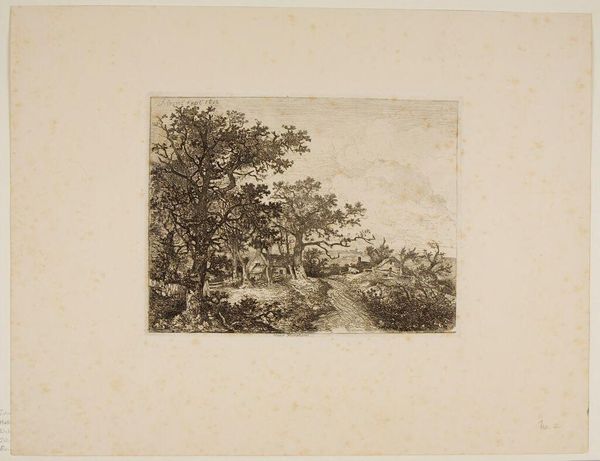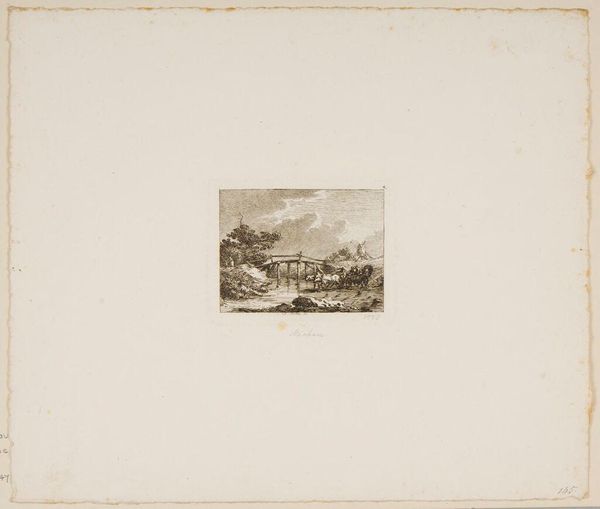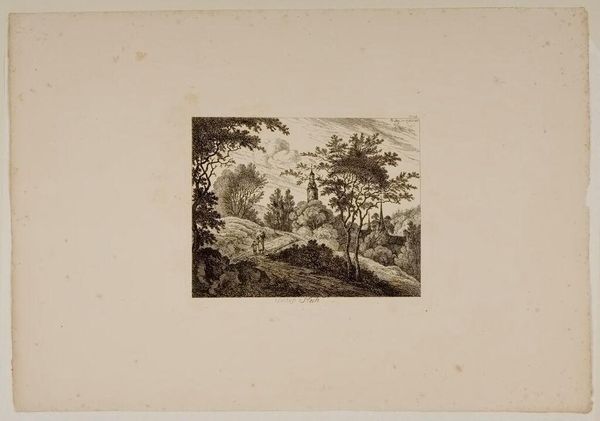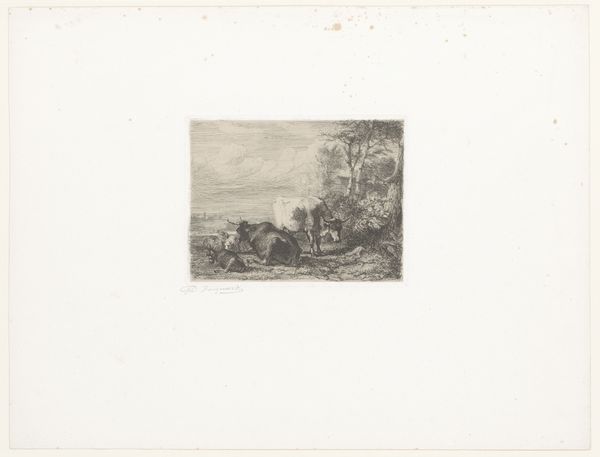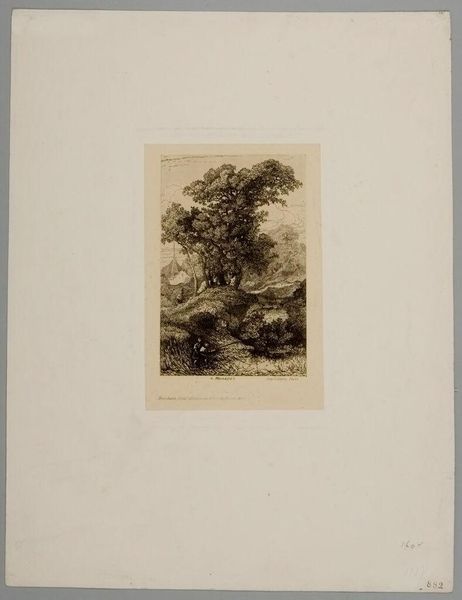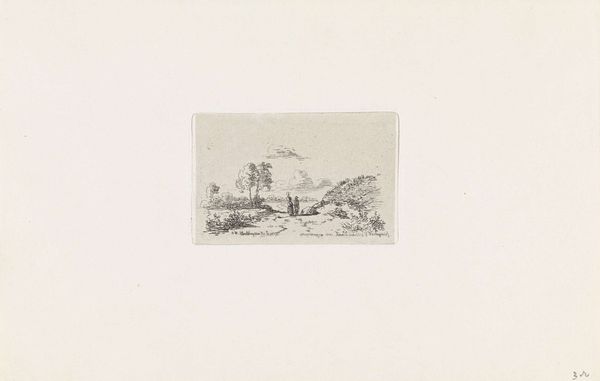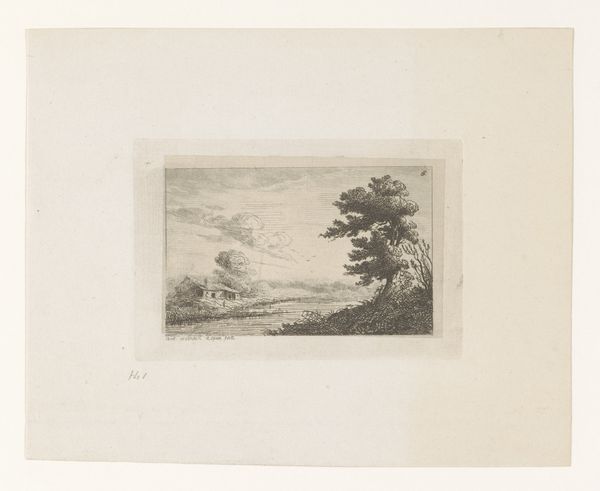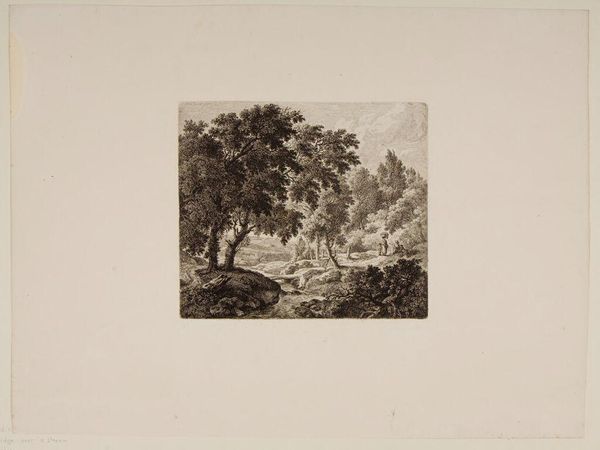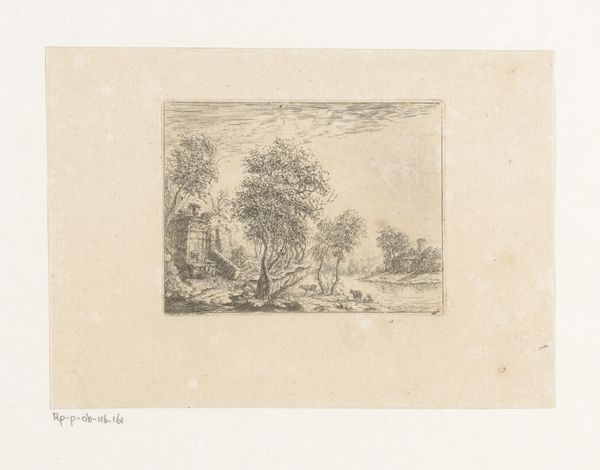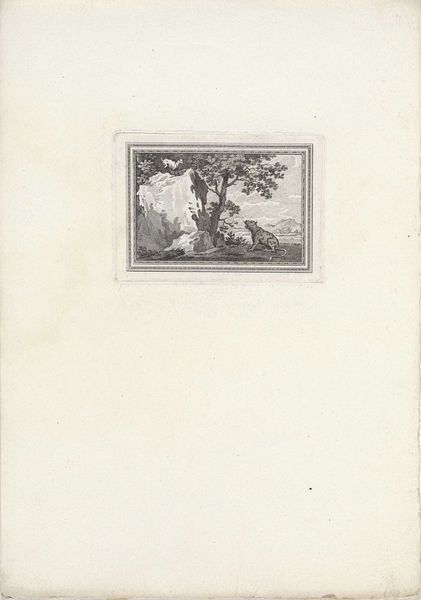
Copyright: CC0 1.0
Curator: Jacob Wilhelm Mechau, a German artist active in the late 18th and early 19th centuries, created this piece; it's called Plate Four. Editor: It feels like a scene from a traveler’s journal, a quick sketch of a windswept landscape. Somber, almost desolate. Curator: Mechau was known for his landscape etchings, often depicting pastoral scenes idealized through a classical lens. This plate reflects the period’s fascination with nature and the picturesque. Editor: Look at how small the figures are compared to the vastness of the scene. Are they dwarfed by the elements or simply disconnected from the land? I see a tension between human presence and natural power. Curator: The composition follows conventions popular at the time, drawing on ideas about how landscapes should be composed for aesthetic and moral impact, and how they were sold to the public. Editor: It makes me think about land ownership, even. Who gets to represent the landscape, and whose stories are left out of these idyllic scenes? Curator: It’s a reminder of the complex relationship between art, nature, and the social structures that frame our understanding. Editor: Indeed. Art can never truly be divorced from the cultural moment in which it’s created.
Comments
No comments
Be the first to comment and join the conversation on the ultimate creative platform.
